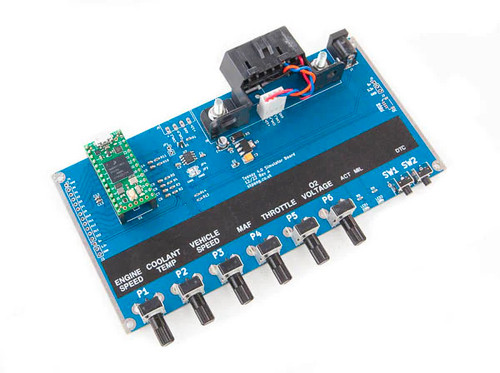Recent Posts
Know OBD2 Before You Start That Development Project
Posted by on
We at Copperhill Technologies offer a variety of CAN (Controller Area Network) devices for developing automotive and industrial embedded systems. In that capacity, we receive frequent inquiries regarding OBD2 (Onboard Diagnostics).
OBD2, or Onboard Diagnostics Second Generation, is a vehicle diagnosis system found in modern cars and trucks. The OBD2 system collects data from sensors and other monitoring devices, which are then examined by the vehicle's engine control unit (ECU) to determine whether any issues need to be addressed. Problems with the engine, gearbox, emissions system, and others, are among the most common faults that OBD2 can discover.
Source: https://www.autopi.io/blog/what-is-obd-2/
Unfortunately, the inquiries we receive also reflect some misunderstanding of OBD's purpose and functionality. To make it a point, OBD2 is a mere diagnostics system that allows you to monitor the vehicle's performance. It does not allow you to control the car stereo, windows, steering wheel, or brakes (there were multiple inquiries in that direction, ignoring the more than serious liability aspects).
Of course, there are valid approaches to ODB2 development. Besides some unique ideas, most are about vehicle maintenance and fleet management, including telematics, vehicle performance, and predictive failure analysis.
Furthermore, some entrepreneurs with great ideas miss the stringent hardware requirements to meet harsh environmental conditions, such as temperature and vibration. Your solution should work in Death Valley as well as Antarctica. Many of our customers use the Raspberry Pi with the PiCAN series of CAN Bus HATs for their OBD2 projects. This approach is a great starting point to prove the concept, but in the majority of cases, not recommended for mass production. Alternatively, if you deem your OBD2 project a fun hobby, you are on the right track.
To make it a point, regardless if your OBD2 project is a mere hobby or a great business idea, you need to know OBD2. For example, OBD2 is not a mere protocol based on the CAN Bus. There are five different OBD2 protocols. They are:
- ISO 15765 (CAN bus): Mandatory in US cars since 2008 and is today used in the vast majority of cars
- ISO14230-4 (KWP2000): The Keyword Protocol 2000 was a common protocol for 2003+ cars in, e.g., Asia
- ISO9141-2: Used in EU, Chrysler & Asian cars in 2000-04
- SAE J1850 (VPW): Used mostly in older GM cars
- SAE J1850 (PWM): Used mostly in older Ford cars
Source: https://www.csselectronics.com/pages/obd2-explained-simple-intro
However, since ISO 15765 (CAN Bus) has been mandatory for US cars since 2008, one can assume that OBD2 in the majority of cars in the US uses Controller Area Network.
For more information on OBD2, see:
- OBD-II & Electronic Engine Management Systems...
- How To Use Automotive Diagnostic Scanners: - Understand OBD-I and OBD-II Systems...
- Vehicle BUS Communications: Practical Hands On working with CANBUS & OBD-II...
 Teensy 4.0 OBDII CAN-Bus ECU Simulator Includes Teensy 4.0
Teensy 4.0 OBDII CAN-Bus ECU Simulator Includes Teensy 4.0
This is a CAN-Bus OBDII ECU simulator using the Teensy 4.0 module (included). Useful for testing OBDII interface and writing diagnostic software. ECU PIDs parameters are adjustable via potentiometers.
This board requires a 12 VDC power supply. A 12 VDC adapter is included.
 Loading... Please wait...
Loading... Please wait...
